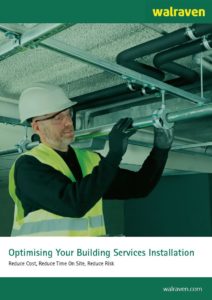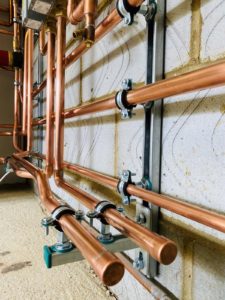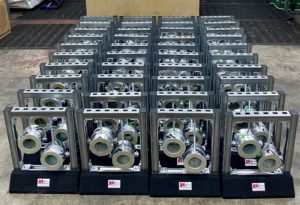Building services play an important role in the construction and performance of a building. Despite this, our experience tells us that building services fixings are rarely planned in at project design stage. In fact, they are frequently not considered until much nearer installation phase. Whilst this approach  can work, it leaves little time and flexibility to plan the most effective and efficient fixings. Consequently, it can lead to time pressures, increased costs and increased risks when it comes to product selection and installation.
can work, it leaves little time and flexibility to plan the most effective and efficient fixings. Consequently, it can lead to time pressures, increased costs and increased risks when it comes to product selection and installation.
We have written a guide to optimising your building services installation to reduce cost, reduce risk and reduce time on site. This gives insight into some ways that you can work smarter when designing your M&E fixing requirements.
Below are some highlights from the guide, the full document can be downloaded here.
It is not unusual for construction projects to overrun. Fewer than 1 in 3 contractors report that they always finish projects on time and within budget. Even though building services fixings can seem like a tiny part of the overall project, they can contribute key time-saving benefits if given the opportunity.
Time costs money, so any processes whereby installation time is reduced, can also result in cost savings. 
One way M&E fixings can save time on site is if you choose the right products. There is a huge selection of fixings on the market, from traditional nuts, bolt, washers and pipe brackets to modern, more innovative, labour-saving alternatives. When fixings are not planned in at the design stage, the tendency can be to select products you have always used. But this does not always allow you to reap the benefits of new product developments.
So if you are able to put some time aside in the planning phase of the project to research product alternatives, you could find some real time-savers. For example, there are modern alternatives to traditional strut systems whereby nuts, bolts and washers are all pre-assembled and even some of the bracketry with these systems comes with pre-assembled fixings ready to just twist into place. When you are installing miles of pipework, having pre-assembled fixings can save up to 40% fixing time.
As well as smart product selection, planning ahead and exploring offsite prefabrication of pipe bracketry can also reap time-saving rewards on site. Read more in our guide here.
We have touched on how product selection can save costs, with smart product selection allowing for reduced labour time and therefore reduced labour costs on site. Another key to saving costs is planning ahead. Fixings can seem like a small part of the job requirements. However, if you can spend time planning your requirements ahead of time, you can make valuable savings in a number of areas. Planning fixings earlier in the process can mean:

Find out more about cost saving by downloading the full guide here.
Construction projects are full of risk, even when installing building services, there are risks that can be reduced or mitigated. One major risk is installation failure. If M&E services go wrong there can be costly results of rework to fix issues. So making sure the correct products are selected (for example to deal with pipe movement), and installed according to manufacturer instructions (for example for anchors this is crucial) can go a long way to reduce risk of installation problems down the line.
Modern construction processes like BIM (Building Information Modelling) are now also showing their benefits for reducing risk and generating efficient and effective building services installations.
Read our complete guide to optimising your building services installation.